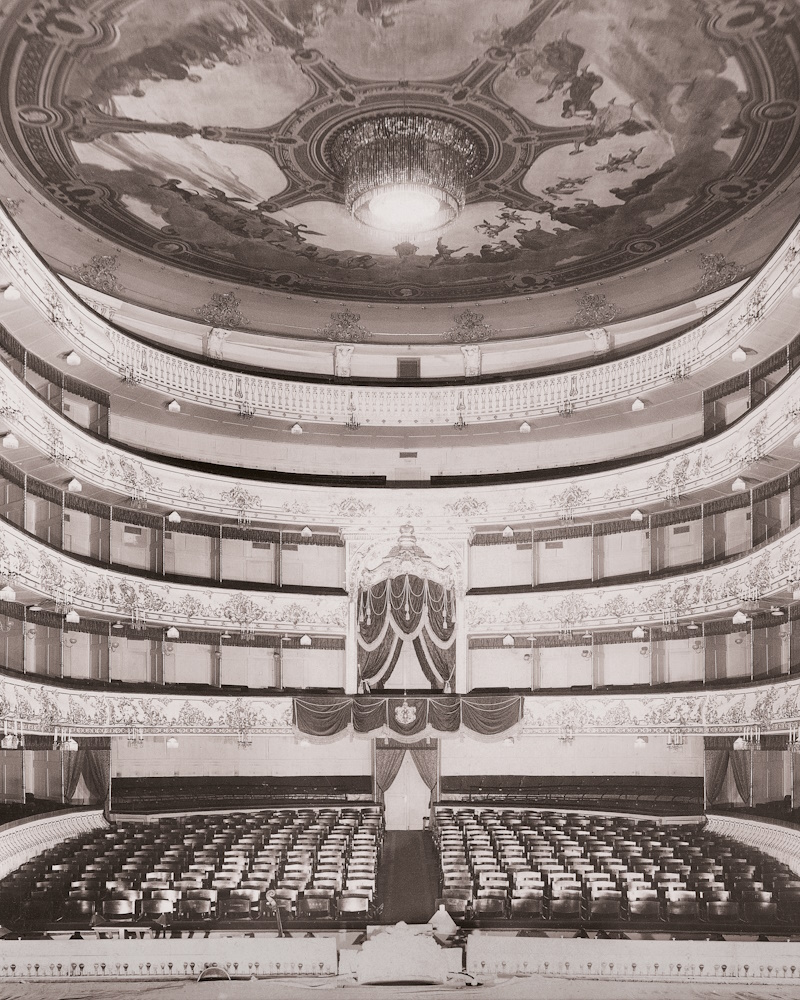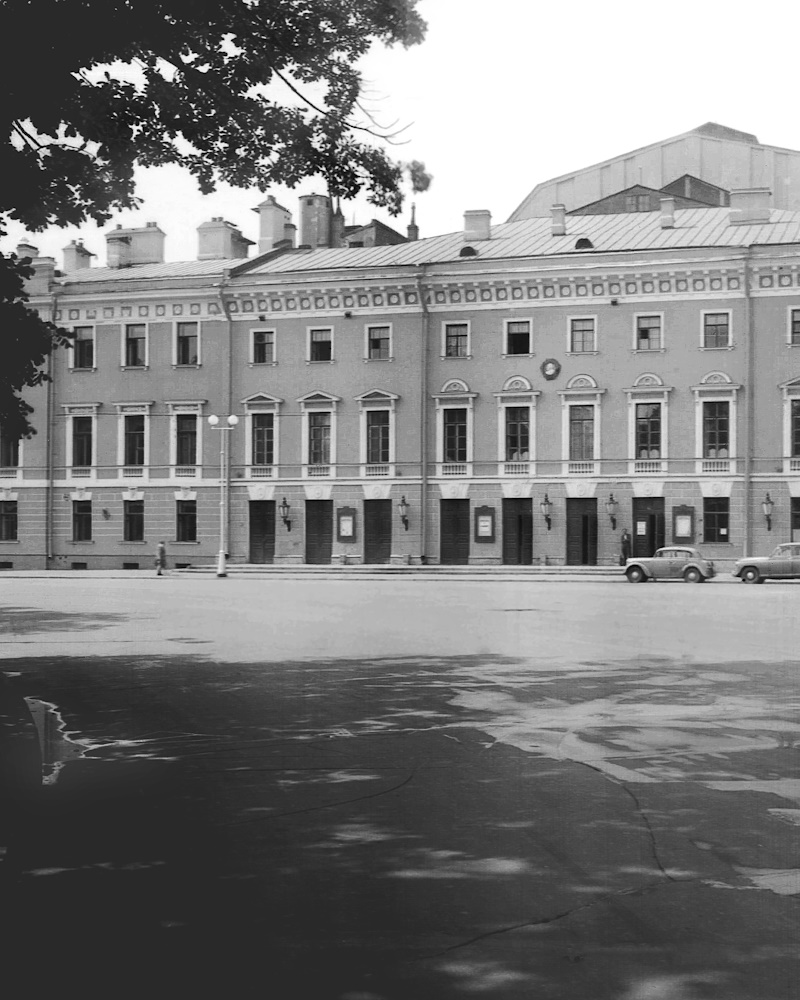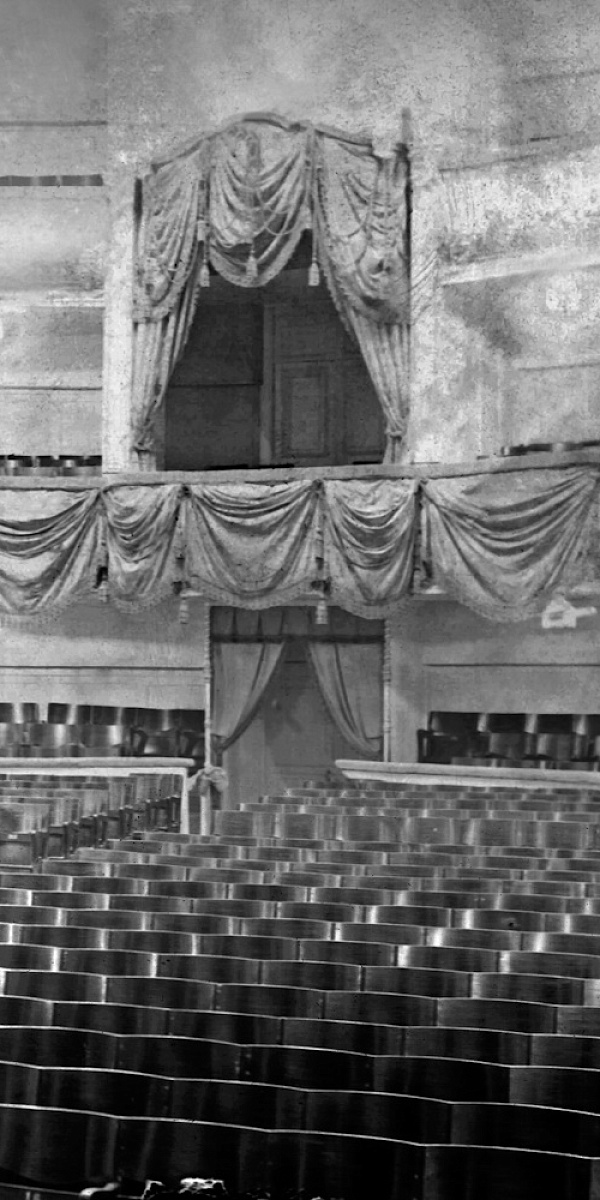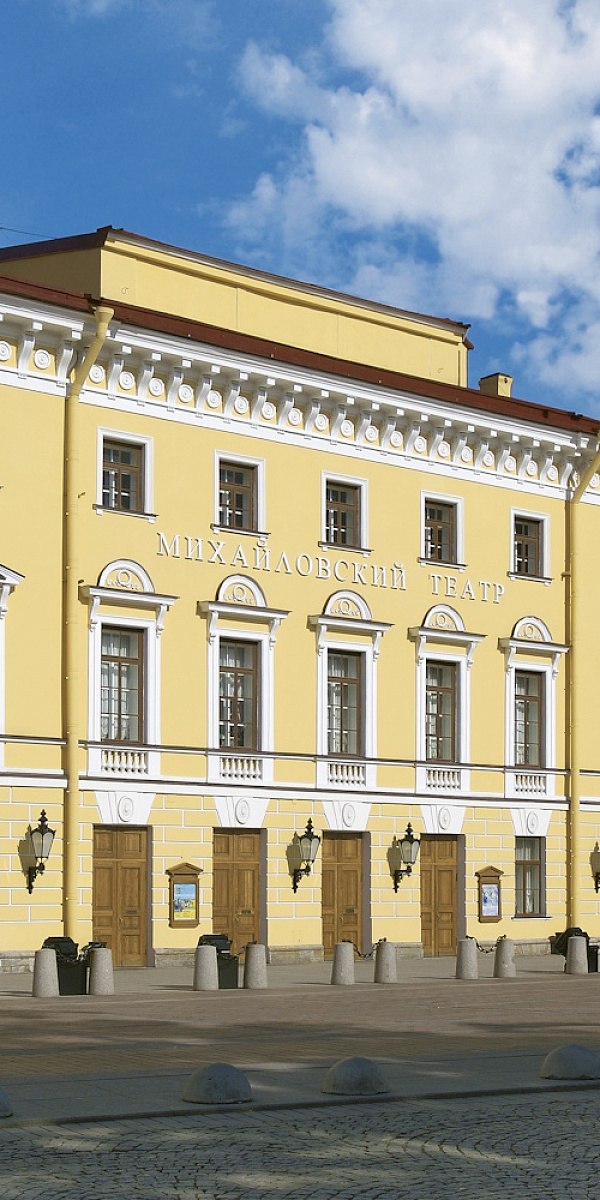History
The St. Petersburg Mussorgsky State Academic Theatre of Opera and Ballet — the Mikhailovsky Theatre — is one of the leading theatres in Russia. It is famous for its sensational premieres and great names, and has always been a favourite of the public.
The dazzling history of the Mikhailovsky Theatre began in the 1830s, with the selection of the architect for the building. A refined connoisseur of art, Alexander Brullov built a theatre that was suitable for the already existing ensemble of Arts Square. The façades were designed by Carl Rossi to harmonise with the building of the Mikhailovsky Palace. Brullov created magical plasterwork — the full brilliance of the imperial theatre is contained inside: silver and velvet, mirrors and crystal, painting and stucco. On 8 November 1833, the capital’s new theatre opened its doors for the first audiences, and in 1859 during renovations managed by Alberto Cavos, the stage and the third tier were expanded, and the platform by the Italian artist Giovanni Buzatto appeared, “The Victory of Enlightenment and Science Over the Dark Forces of Ignorance”, which adorns the theatre to this day.
Over time the theatre, which bore the name of Grand Prince Mikhail Pavlovich, became firmly associated with the fine arts. The entire Petersburg society came to the Mikhailovsky Theatre, including the court and the imperial family. French and German troupes performed on the stage, Matilda Kshesinskaya and Fyodor Chaliapin, Rachel and Sara Bernard, and Johann Strauss conducted.
After the revolution of 1917, the former Mikhailovsky Theatre opened its new season as the second state opera theatre of Petrograd: in 1920 it was named the State Academic Theatre of Comic Opera; in 1921 it was renamed the Small Academic Theatre, and in 1926 the Leningrad Academic Small Opera Theatre.
In the 20th century, the theatre became a “laboratory of Soviet opera”. In the 1930s, the world premieres of Shostakovich’s operas “The Nose” and “Lady Macbeth of the Mtsensk District” and his ballet “The Bright Stream” were held, and in the 1940s, Prokofiev’s opera “War and Peace”. Vsevolod Meyerhold’s innovative production of “The Queen of Spades” was held here, and operas by Sergei Slonimsky and Rodion Shchedrin were also performed here for the first time.
In 1989, the theatre was named for Modest Mussorgsky. The original historical name was returned in 2001, and six years later Vladimir Kekhman was appointed general director.
Over the years of his directorship, life on Arts Square has changed: two the spirit of experiment and innovation, which ensured the theatre went down in history of art of the 20th century, is combined originally with the atmosphere of the imperial theatre.
The ballet troupe is led by renowned Spanish choreographer Nacho Duato, and the opera troupe by Boris Pinkhasovich, while Alexander Soloviev is the musical head and chief conductor of the theatre. The theatre has a close-knit team, which ensures that every premiere becomes an important event in the cultural life of the country. In the current repertoire, opera and ballet classics can be found alongside modern productions, and both young talented artists and invited stars of world art perform on the stage.



